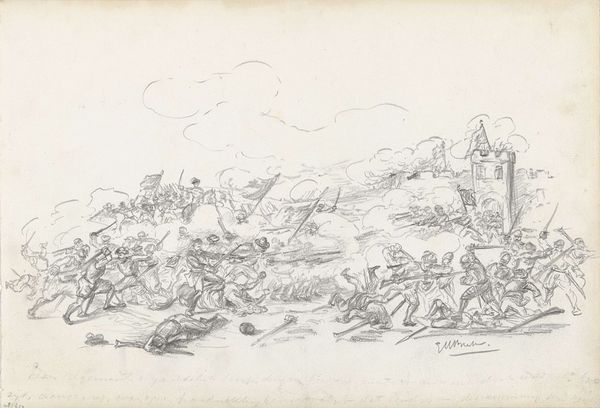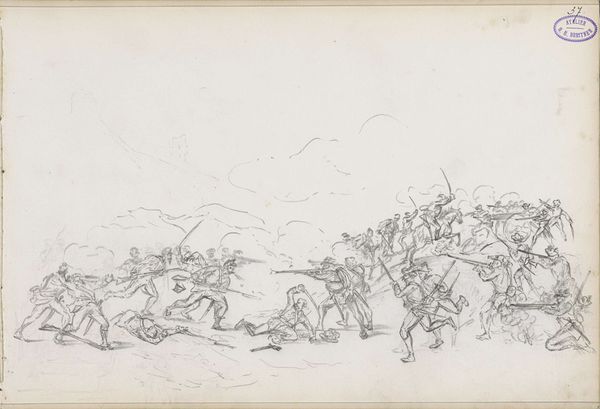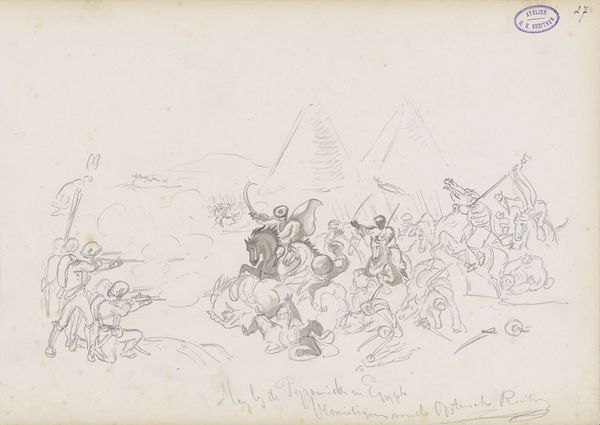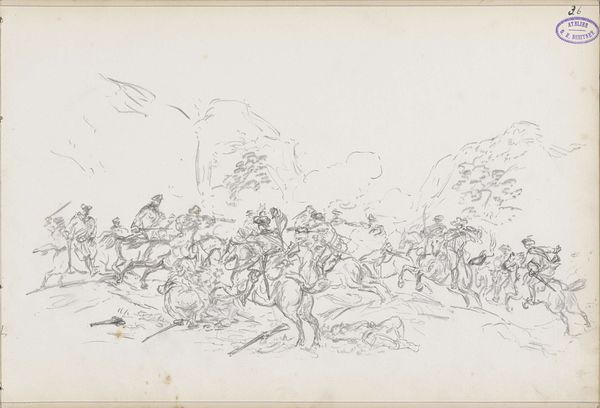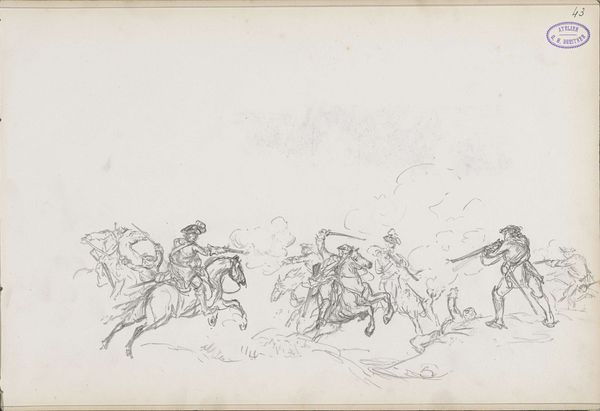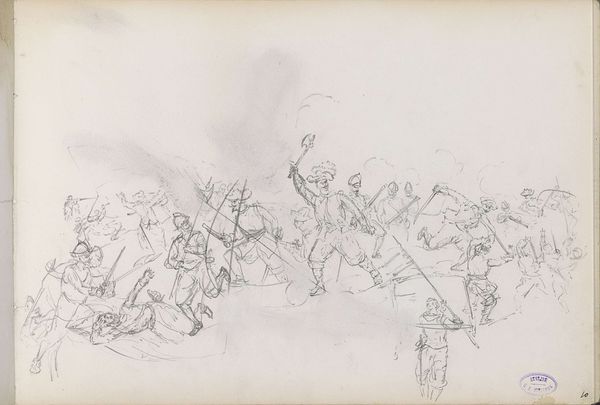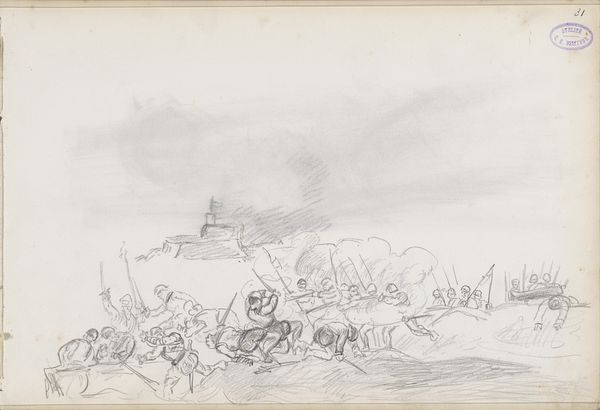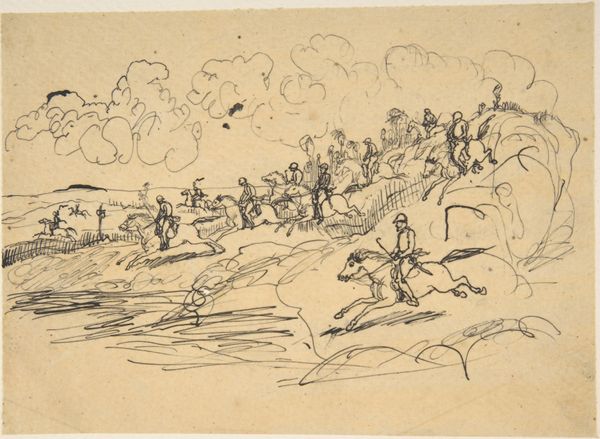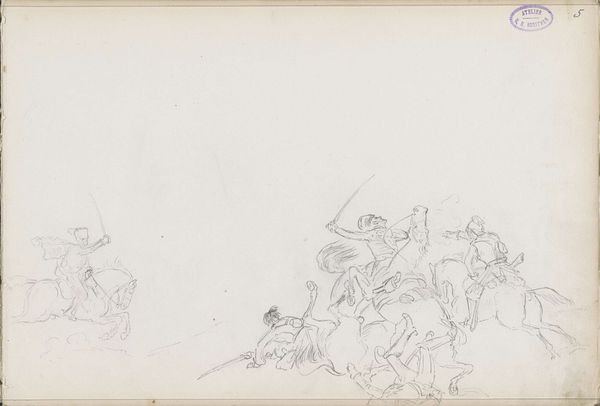
drawing, impasto, pencil
#
drawing
#
narrative-art
#
landscape
#
figuration
#
impasto
#
pencil
#
line
#
history-painting
#
realism
Dimensions: height 213 mm, width 307 mm
Copyright: Rijks Museum: Open Domain
Editor: This is George Hendrik Breitner's "Battle of Göttingen," a pencil drawing from 1872. It feels so raw, so immediate, despite depicting an historical event. All those frantic lines... What do you see in this piece? Curator: Well, beyond the dynamism of the depicted battle, I see a young artist grappling with history and representation. Breitner's realism isn't just about visual accuracy. He’s capturing the emotional truth of conflict, but who's story is really being told in depictions of war? Editor: What do you mean? Curator: Consider the romanticism of warfare that often overshadows its brutality, often reinforcing nationalist ideologies. The 'heroic' depiction tends to erase the trauma inflicted on both combatants and civilians and silences dissenting voices. Does this drawing challenge or reinforce that narrative? Look at the fallen bodies; are they generic, or do they hint at individual stories silenced by conflict? Editor: That’s a really interesting point! I guess I hadn’t considered how even in a seemingly neutral style, there’s still a choice of what and whose stories to tell. Curator: Precisely. Think about how 19th-century history painting often served the interests of the state, celebrating military victories and solidifying national identity, potentially overshadowing the suffering inflicted. Who benefits from this romanticisation? Editor: It’s given me a whole new perspective on how to look at historical artworks. Thanks! Curator: Likewise, thinking about these power dynamics always deepens my appreciation.
Comments
No comments
Be the first to comment and join the conversation on the ultimate creative platform.
